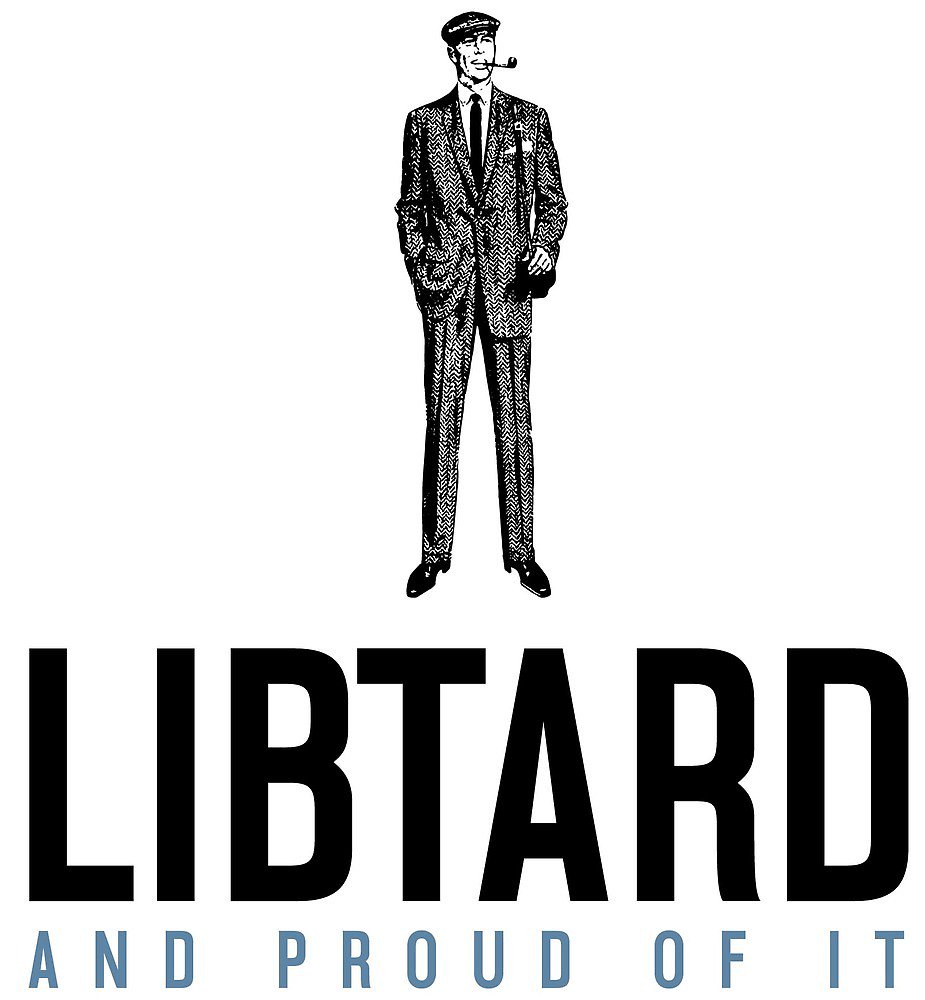#HolySaturday
In the America 1930s, a new kind of Christianity was emerging. It was aimed at the wealthy, and was supported by massive companies. The aim was to change Christian meaning.
But it didn't really start to pick up until 'The New Deal ' which was to help to poor.
In the America 1930s, a new kind of Christianity was emerging. It was aimed at the wealthy, and was supported by massive companies. The aim was to change Christian meaning.
But it didn't really start to pick up until 'The New Deal ' which was to help to poor.
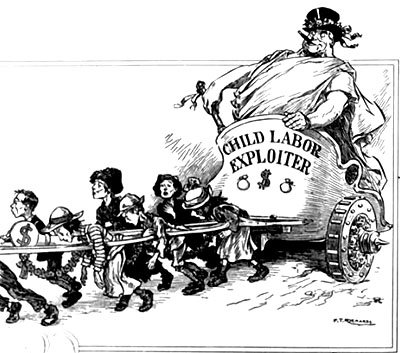
This new Christianity, you didn't need to read the Bible, but you had attend church.
Now this was only aimed at the rich and middle classes.
The preacher would clearly state, that you having money was a gift from God, and the poor were being punished by God.
Now this was only aimed at the rich and middle classes.
The preacher would clearly state, that you having money was a gift from God, and the poor were being punished by God.
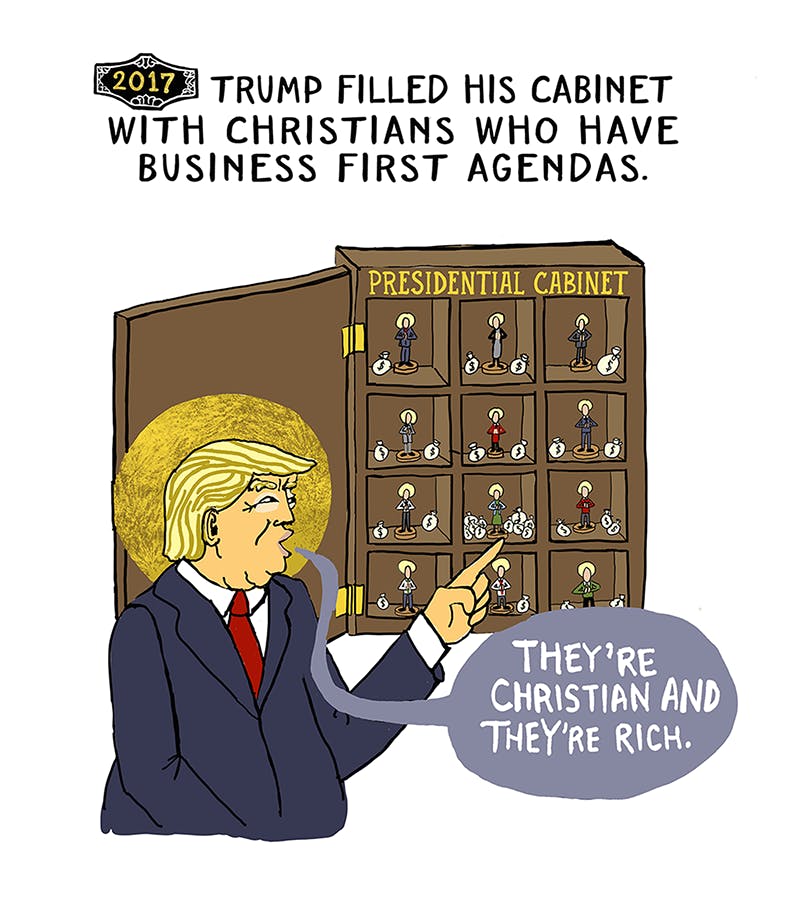
Yes, massive chunks from the Bible was ignored, and in fact their Bibles had eradicated Jesus helping the poor.
Being rich and Christian meant you were truly blessed by God. But in reality, it really did create #FakeChristians
Decades of this, now so integrated into the
Being rich and Christian meant you were truly blessed by God. But in reality, it really did create #FakeChristians
Decades of this, now so integrated into the
#ReligiousRight it became the norm.
Churches, preachers supported by the mega rich.
Soon this integrated into politics, the conservative far right.
This was based in greed and pushed for family values and morals.
However, these morals were also cherry picked.
Churches, preachers supported by the mega rich.
Soon this integrated into politics, the conservative far right.
This was based in greed and pushed for family values and morals.
However, these morals were also cherry picked.
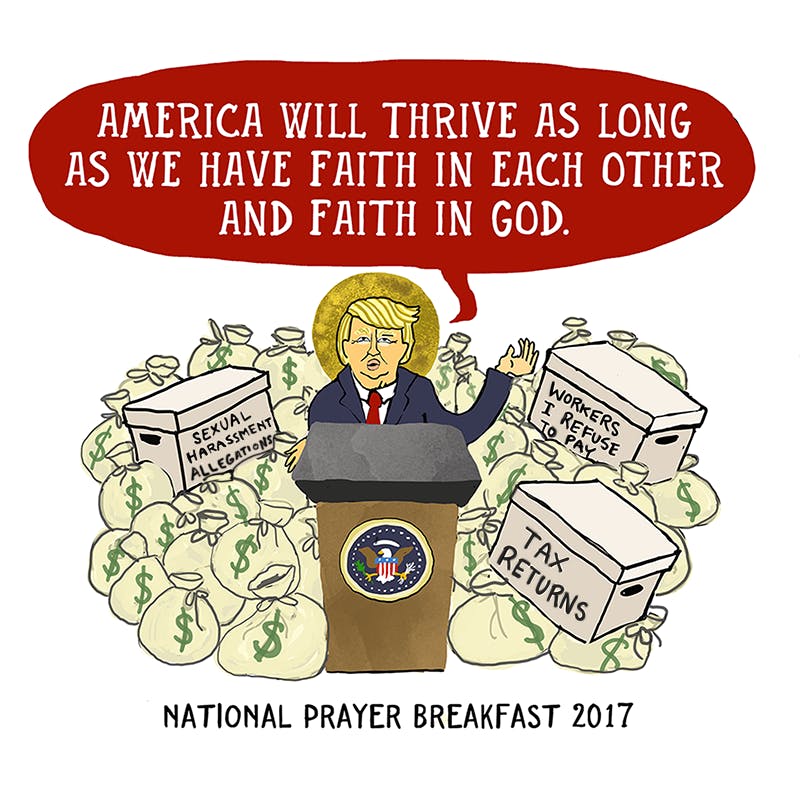
There was virtually no mention of adultery, particular as far as men were concerned. And adultery was not punishable. So they had this backwards sense of morality. Gays, abortion, punishable and men performing adultery was forgotten.
The rise of this #FakeChristianity resulted
The rise of this #FakeChristianity resulted
In many people turning away from the church.
The Christian left was virtually silent. Until in 2016, things got completely out of control. You had a man who was soooo immoral that real Christians began to challenge them. Then trump himself turned 'Christian'
The Christian left was virtually silent. Until in 2016, things got completely out of control. You had a man who was soooo immoral that real Christians began to challenge them. Then trump himself turned 'Christian'
because this type of fake Christianity is very powerful and very rich. But it no longer has any real involvement with what is written in the Bible. And there are laughable conspiracies that tRump is blessed by God, adding even further to the insanity of #Cult45 
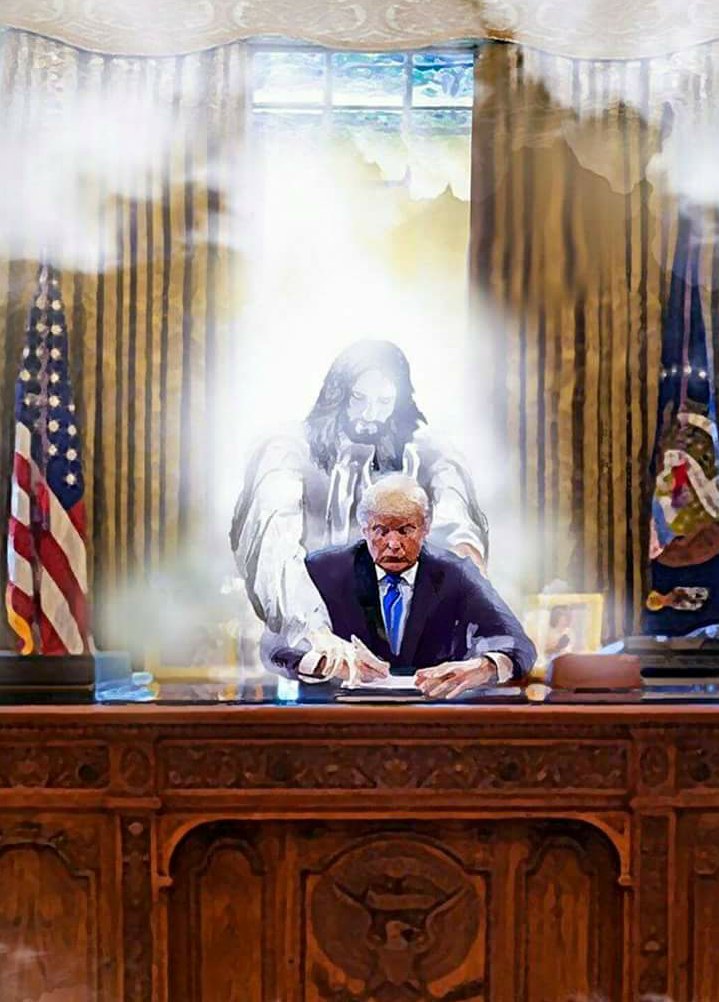
If people who called themselves Christian, actually read the Bible, would no longer support the Religious Right, they would finally see them as the Religious Wrong. 
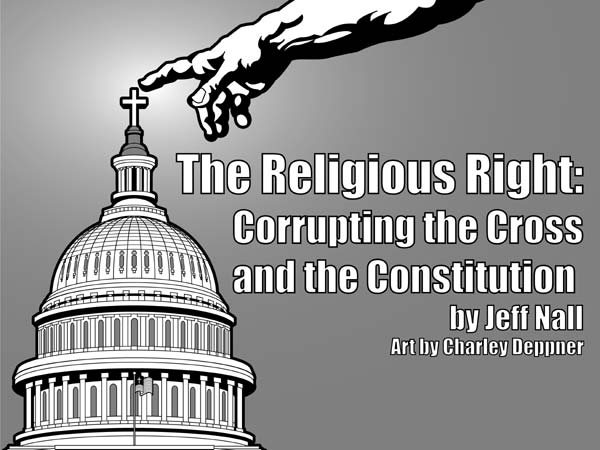
In 1935 Revered Fifield crafted an interpretation of the Bible that catered to his rich congregation.
Fifield dismissed the many passages in the New Testament about wealth and poverty, and instead assured the elite that their worldly success was a sign of God’s blessings.
Fifield dismissed the many passages in the New Testament about wealth and poverty, and instead assured the elite that their worldly success was a sign of God’s blessings.
Fifield founded Spiritual Mobilization, an organization whose mission was “to arouse the ministers of all denominations in America to check the trends toward pagan stateism, which would destroy our basic freedom and spiritual ideals.”
The organization’s credo reflected the common politics of the millionaires in his congregation: Men were creatures of God imbued with “inalienable rights and responsibilities,”
specifically enumerated as “the liberty and dignity of the individual, in which freedom of choice, of enterprise and of property is inherent.” Churches, it asserted, had a solemn duty to defend those rights against the encroachments of the state.
Fifield quickly brought the organization into national politics, gaining attention from leading conservatives across America who were eager to enlist ministers in their fight against the New Deal.
Former President Herbert Hoover, deposed by Roosevelt and disparaged by his acolytes, advisedand encouraged Fifield in personal meetings and regular correspondence. “If it would be possible for the Church to make a non-biased investigation into the morals of this government,”
Hoover wrote the minister i, “they would find everywhere the old negation of Christianity that ‘the end justifies the means.’” In October 1938, Fifield sent an alarmist tract to more than 70,000 clergymen across the nation, seeking to recruit them in the revolt against Roosevelt.
“We ministers have special opportunities and special responsibilities in these critical days,” it began. “America’s movement toward dictatorship has already eliminated checks and balances in its concentration of powers in our chief executive.”
Finding the leaflet to his liking, Hoover sent Fifield a warm note of appreciation and urged him to press on.
Within a few years, the minister had the support of not just Hoover but an impressive array of conservative figures in politics, business and religion
Within a few years, the minister had the support of not just Hoover but an impressive array of conservative figures in politics, business and religion
“a who’s who of the conservative establishment,” in the words of one observer. As Spiritual Mobilization’s national ambitions grew, Fifield searched for more sponsors to finance the fight
In the mid-1940s, he won a number of powerful new patrons, but none was more important than J. Howard Pew Jr., president of Sun Oil.
Tall and stiff, with bushy eyebrows, Pew had a stern appearance that matched his attitude. He had previously been involved in anti-New Deal organizations like the Liberty League and now believed the postwar era would witness a renewed struggle for the soul of the nation.
Looking over some material from Spiritual Mobilization, Pew decided the organization shared his understanding of what was wrong with America and what needed to be done. But to his dismay, the material offered no agenda for action whatsoever,
merely noting that Spiritual Mobilization would send clergymen bulletins and place advertisements but ultimately “leave details” of what to do “to individual ministers.” Pew thought this was no way to run a national operation. “I am frank to confess,” he wrote a confidant,
“that if Dr. Fifield has developed a concrete program and knows exactly where he is going and what he expects to accomplish, that conception has never become clearly defined in my mind.”
If Pew felt Fifield’s touch had been too light, he knew a more forceful approach would fail as well. In February 1945, famed industrial consultant Alfred Haake explained to Pew why NAM’s own outreach to ministers had failed.
.
“Of the approximately thirty preachers to whom I have thus far talked, I have yet to find one who is unqualifiedly impressed,” Haake reported. “One of the men put it almost typically for the rest when he said:
‘The careful preparation and framework for the meetings to which we are brought is too apparent. We cannot help but see that it is expertly designed propaganda and that there must be big money behind it. We easily become suspicious.’”
If they wanted to convince clergymen to side with them, industrialists would need a subtler approach. Rather than treating ministers as a passive audience to be persuaded, Haake argued,
they should involve them actively in the cause as participants. The first step would be making ministers realize that they, too, had something to fear from the growth of government. “The religious leaders must be helped to discover that their callings are threatened,
” Haake argued, by realizing that the “collectivism” of the New Deal, “with the glorification of the state, is really a denial of God.”
Once they were thus alarmed, they would readily join Spiritual Mobilization as its representatives and could then be organized more effectively into a force for change both locally and nationally.
Reverend Fifield worked tomake Spiritual Mobilization out of the ranks of the clergy. The growing numbers of its “minister-representatives” were found in every state,
with large concentrations in industrial regions like New York, Pennsylvania, Ohio and Illinois. They were overwhelmingly Protestant, though a scattering of priests and rabbis allowed the organization to present itself as part of the new spirit of “Judeo-Christianity.”
In the previous decade, this innovative “interfaith” approach had taken shape as a way for liberal clergymen to unite in common social causes. Now, in the postwar era, conservative organizations such as Spiritual Mobilization shrewdly followed suit.
The organization grew rapidly. In February 1947, Fifield reported that in three years he had expanded the mass of their minister-representatives from an initial 400 members to more than 10,000 in all. He set them to work spreading
arguments against the “pagan stateism” of the New Deal. “It is time to exalt the dignity of individual man as a child of God,” he urged. “Let’s redouble our efforts.”
Clergymen responded enthusiastically. Many wrote the Los Angeles office to request advertised copies of Friedrich Hayek’s libertarian treatise The Road to Serfdom and anti–New Deal tracts by Herbert Hoover and libertarian author Garet Garrett.
Armed with such materials, the minister-representatives transformed secular arguments into spiritual ones and spread them widely. “Occasionally I preach a sermon directly on your theme,” a Midwestern minister wrote,
“but equally important, it is in the background of my thought as I prepare all my sermons, meet various groups and individuals.” Everyday activities were echoed by special events.In October 1947, for instance, Spiritual Mobilization held a national sermon
competition on the theme “The Perils to Freedom,” with $5,000 offered in prize money.The organization had more than 12,000 minister representatives at that point,it received twice as many submissions for the competition representing roughly
15 percent of the entire country’s clergymen.
Pleased with his progress, Fifield’s backers doubled the annual budget. Pew once again set the pace, soliciting donations from officials at 158 corporations,
Pleased with his progress, Fifield’s backers doubled the annual budget. Pew once again set the pace, soliciting donations from officials at 158 corporations,
including longstanding supporters of Spiritual Mobilizationsuch as General Motors, Chrysler, National Steel, Firestone Tire and Rubber and Gulf Oil.
“A large percentage of ministers in this country are completely ignorant of economic matters and have used their pulpits for the purpose of disseminating socialistic and totalitarian doctrines,” Pew wrote in his appeal.
“Much has already been accomplished in the education of these ministers, but a great deal more is left to be done.”
The success of Spiritual Mobilization brought increased funding, but also scorn from progressives.
The success of Spiritual Mobilization brought increased funding, but also scorn from progressives.
In February 1948, the Nation ranan acidic cover story. “A major battle for the minds of the clergy, particularly those of the Protestant persuasion, is now being waged in America,” it read.
“For the most part the battle lines are honestly drawn and represent a sharp clash in ideologies, but now and then the reactionary side tries to fudge a bit by backing movements which mask their true character and real sponsors. Such a movement is Spiritual Mobilization.”
The article detailed the scope of its operations, noting its high-rent offices in New York, Chicago and Los Angeles, as well as the hundreds of thousands of pamphlets by pro-business authors it distributed for free.
But no one knew who was funding the operation, the Nation warned. In this withering account, Fifield came off as a charlatan who prostrated himself before the “apostles of rugged individualism” to secure his own fame and fortune and, in return, prostituted himself for their needs
In response, Spiritual Mobilization redoubled its efforts, taking an even more aggressive approach to public relations. In 1949, it launched The Freedom Story, a 15-minute radio program consisting of a dramatic presentation and brief commentary from Fifield.
In the original scripts, Fifield made direct attacks on Democratic programs at home, but his lawyer warned him they would lose the “public service” designation that gave them free airtime if he were “too plain spoken” with partisan attacks.
Instead, he advised, the minister should make use of foreign examples to illustrate the spreading menace of “creeping socialism” at home. Fifield’s financial backers helped secure free airtime for these programs across the nation.
In 1950, The Freedom Story was broadcast on over 500 stations; by late 1951, it aired on more than 800.
Meanwhile, Spiritual Mobilization launched a monthly magazine, Faith and Freedom, showcasing the work of prominent libertarian authors, including Ludwig von Mises, leader of the Austrian School of economics;
Leonard Readfounder of the Foundation for Economic Education;and Henry Hazlitt,a founding member of the future American Enterprise Institute. Even though laymen dominated the pages of Faith and Freedom,the journal purposely presented itself as created by ministers for ministers.
Spiritual Mobilization had long operated on the principle that clergymen could not be swayed through crude propaganda. “The articulation should be worked out beforehand, of course, and we should be ready to help the thinking of the ministers on it,”
Haake noted in one of his early musings, “but it should be so done as to enable them to discover it for themselves.”
Faith and Freedom thus presented itself as a forum in which ministers could disagree freely.
Faith and Freedom thus presented itself as a forum in which ministers could disagree freely.
But for all of its claims about encouraging debate, the journaldid little to hide its contempt for liberal ministers. The magazine repeatedly denounced the Social Gospel and, just as important, clergymen who invoked it to advocate for the establishment
and expansion of welfare state programs. In a typical article, Irving Howard, a Congregationalist minister, darkly noted the “pagan origin of the Social Gospel” in 19th century Unitarianism and Transcendentalism,
claiming it was part of a larger “impetus to a shift in faith from God to man, from eternity to time, from the individual to the group, [from] individual conversion to social coercion, and from the church to the state.”
With the Republican gains in the midterm elections of 1950, the forces behind Spiritual Mobilization felt emboldened. In an upbeat letter to Alfred Sloan, the head of General Motors and one of his ardent supporters, Fifield reflected on the recent returns.
“We are having quite a deluge of letters from across the country, indicating the feeling that Spiritual Mobilization has had some part in the awakening which was evidenced by the elections,” he wrote.
“Of course, we are a little proud and very happy for whatever good we have been able to do in waking people up to the peril of collectivism and the importance of Freedom under God.”
For Fifield and his associates, the phrase “freedom under God”—contrasted with what they saw as oppression under the federal government—became an effective new rallying cry in the early 1950s.
The minister pressed the theme repeatedly in the pages of Faith and Freedom and in his radio broadcasts of The Freedom Story, but he soon found a more prominent means of spreading the message to the American people
In the spring of 1951, Spiritual Mobilization’s leaders struck upon an idea they believed would advance their cause considerably. To mark the 175th anniversary of the signing of the Declaration of Independence,
they proposed for the week surrounding the Fourth of July a massive series of events devoted to the theme of “Freedom Under God.”
To that end, in June 1951, the leaders of Spiritual Mobilization announced the formation of a new Committee to Proclaim Liberty to coordinate their Fourth of July “Freedom Under God”
celebrations. Despite its apparent spiritual emphasis, the true goal of the Committee was advancing political conservatism.
Its two most prominent members had been brought low by Democratic administrations: Hoover, driven from the White House two decades earlier by Franklin Roosevelt, and Gen. Douglas MacArthur, removed from his command in Korea two months earlier by Harry Truman.
These conservative icons were joined by military leaders, heads of patriotic groups, conservative legal and political stars, right-wing media figures and outspoken conservatives from the realm of entertainment,
such as Bing Crosby, Cecil B. DeMille, Walt Disney and Ronald Reagan. But the majority came from corporate America. J. Howard Pew was joined by other business giants, including household names
such as Harvey Firestone, Conrad Hilton, James L. Kraft, Henry Luce, Fred Maytag and J.C. Penney, as well as lesser-known leaders at giant corporations including General Motors, Chrysler, U.S. Steel and Gulf Oil.
The committee’s corporate sponsors took out full-page newspaper ads to promote a pinched version of the Declaration.
Dropping the founding fathers’ long list of grievances about the absence of effective government in the colonies, the sponsors reprinted just the preamble alone.
This approach allowed them to reframe the Declaration as a purely libertarian manifesto, dedicated solely to the removal of an oppressive government.
The San Diego Gas & Electric Company, for instance, encouraged its customers to reread the preamble, which it presented with its editorial commentary running alongside:
These words are the stones upon which man has built history’s greatest work—the United States of America. Remember them well!
“ … all men are created equal … ” That means you are as important in the eyes of God as any man brought into this world. You are made in his image and likeness. There is no “superior” man anywhere.
“ … they are endowed by their Creator with certain unalienable rights … ” Here is your birthright—the freedom to live, work, worship, and vote as you choose. These are rights no government on earth may take from you.
“ … That to secure these rights, governments are instituted among men … ” Here is the reason for and the purpose of government. Government is but a servant—not a master—not a giver of anything.
“ … deriving their just powers from the consent of the governed … ” In America, the government may assume only the powers you allow it to have. It may assume no others.
The Committee to Proclaim Liberty also enlisted the nation’s ministers to promote the “Freedom Under God” festivities. Those on Spiritual Mobilization’s mailing list received a prefabricated press release
that merely needed clergymen to fill in the blanks with their personal information (“‘The purpose of the Committee,’ the Reverend _________ declared, ‘is to revive a custom long forgotten in America—spiritual emphasis on the 4th of July’”).
The committee also established a sermon contest, modeled on the wildly successful “Perils to Freedom” competition of 1947.
The 17,000 minister-representatives of the organization were encouraged to compete for cash prizes and other rewards by writing an original sermon on the theme of “Freedom Under God” and delivering it to their congregations on “Independence Sunday,” July 1, 1951.
These sermons were amplified by a program broadcast that same evening over CBS’s national radio network. Cecil B. DeMille worked with his old friend Fifield to plan the production, giving it a professional tone and attracting an impressive array of Hollywood stars.
Jimmy Stewart served as master of ceremonies, while Bing Crosby and Gloria Swanson offered short messages of their own.
The preamble to the Declaration was read by Lionel Barrymore, who had posed for promotional photos holding a giant quill and looking at a large piece of parchment inscribed with the words “Freedom Under God Will Save Our Country.”
The broadcast featured choral performances of “America” as well as “Heritage,” an epic poem composed by a former leader of the US Chamber of Commerce.
Gen. Matthew Ridgway interrupted his duties leading American forces in Korea to send a keynote address from Tokyo. He insisted that the founding fathers had been motivated, in large part, by their religious faith.
“For them there was no confusion of thought, no uncertainty of objectives, no doubt as to the road they should follow to their goals,” he said.
“Theirs was a deep and abiding faith in God, a faith which is still the great reservoir of strength of the American people in this day of great responsibility for their future and the future of the world.”
The “Freedom Under God” festivities reached a crescendo with local celebrations on the Fourth of July. The Committee to Proclaim Liberty coordinated the ringing of church bells across the nation,
timed to start precisely at noon and last for a full 10 minutes. Cities and small towns across the country scheduled their own events around the bell ringing.
In Los Angeles, for instance, the city’s civil defense agency sounded its air raid sirens in the first test since their installation, resulting in what one newspaper described as “a scream as wild and proud as that of the American eagle.
” As bells chimed across the city, residents were encouraged by the committee “to open their doors, sound horns and blow whistles and ring bells, as individual salutes to Freedom.”
After the bell ringing, groups gathered in churches and homes to read the preamble together. Both Mayor Fletcher Bowron and Gov. Earl Warren, like their counterparts in many other cities and states, issued official proclamations that urged citizens,
in Warren’s words, to spend the day reflecting upon “the blessings we enjoy through Freedom under God.”
That night, 50,000 residents attended a massive rally at the Los Angeles Coliseum. Organized under the theme “Freedom Under God Needs You,”
the night featured eight circus acts, a jet plane demonstration and a fireworks display that the local chapter of the American Legion promised would be the largest in the entire country.
Fifield had the honor of offering the invocation for the evening ceremonies, while actor Gregory Peck delivered a dramatic reading of the Declaration’s preamble.
In the end, the Committee to Proclaim Liberty believed, rightly, that its work had made a lasting impression on the nation. “The very words ‘Freedom Under God’
[have] added to the vocabulary of freedom a new term,” the organizers concluded. “It is a significant phrase to people who know that everybody from Stalin on down is paying lip service to freedom until its root meaning is no longer apparent.
The term ‘Freedom Under God’ provides a means of identifying and separating conditions which indicate pseudo-freedom, or actual slavery, from those of true freedom.
” Citing an outpouring of support for the festivities, the committee resolved to make them an annual tradition and, more important, keep the spirit of its central message alive in American life. The entire nation, its members hoped, would soon think of itself as “under God.”
And indeed, it did. The Christian libertarianism that propelled this religious rhetoric into American politics proved short-lived, but its slogans thrived long after it was goneIronically, language designed to discredit the federal government was soon used to sanctify it instead.
Throughout the 1950s, a new trend of what the Senate chaplain called “under-God consciousness” transformed American political life. In 1953, the first-ever National Prayer Breakfast
was convened on the theme of “Government Under God.” In 1954, the previously secular Pledge of Allegiance was amended to include the phrase “under God” for the first time, too.
A similar slogan, “In God We Trust,” spread just as quickly. Congress added it to stamps in 1954 and then to paper money in 1955; in 1956, the phrase became the nation’s first official motto.
As this religious revival swept through American politics, many in the United States began to believe their government was formally and fundamentally religious. In many ways, they’ve believed it ever since.
So one can see, a very careful manipulation of Christianity in favor of the rich through propaganda has been occurring for over 80 years, resulting in a very distorted Christianity. It's based on a Fake Bible.
This thread was taken from the @politico piece, within the thread. 🖖
This thread was taken from the @politico piece, within the thread. 🖖
• • •
Missing some Tweet in this thread? You can try to
force a refresh



